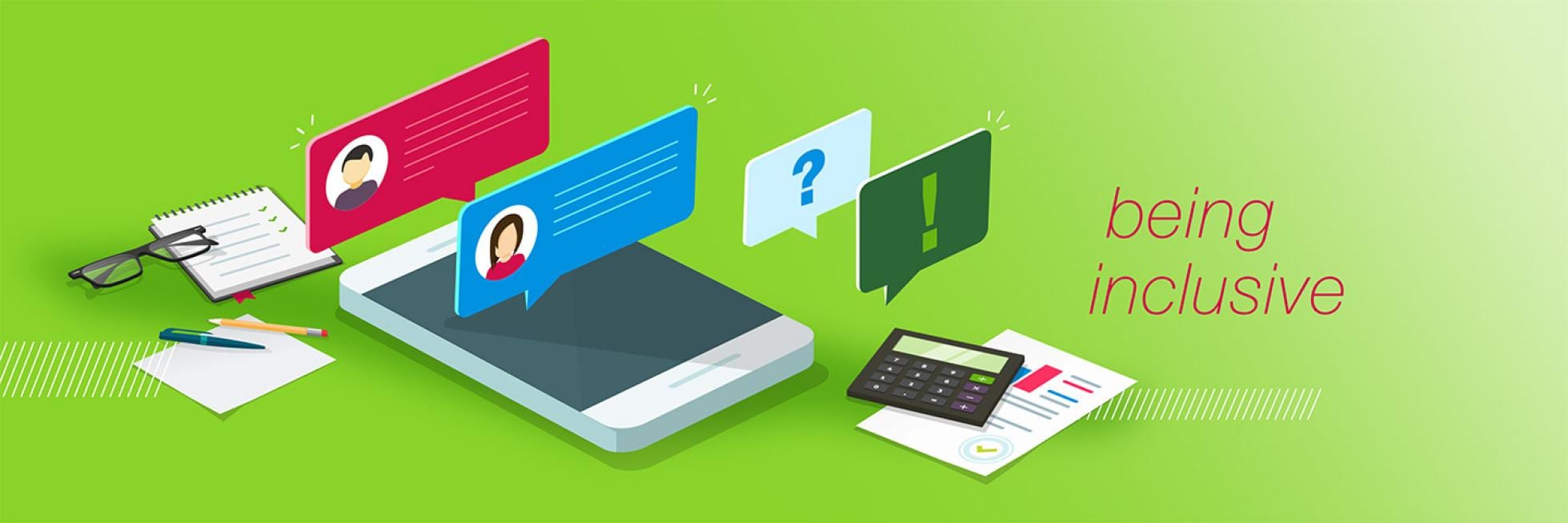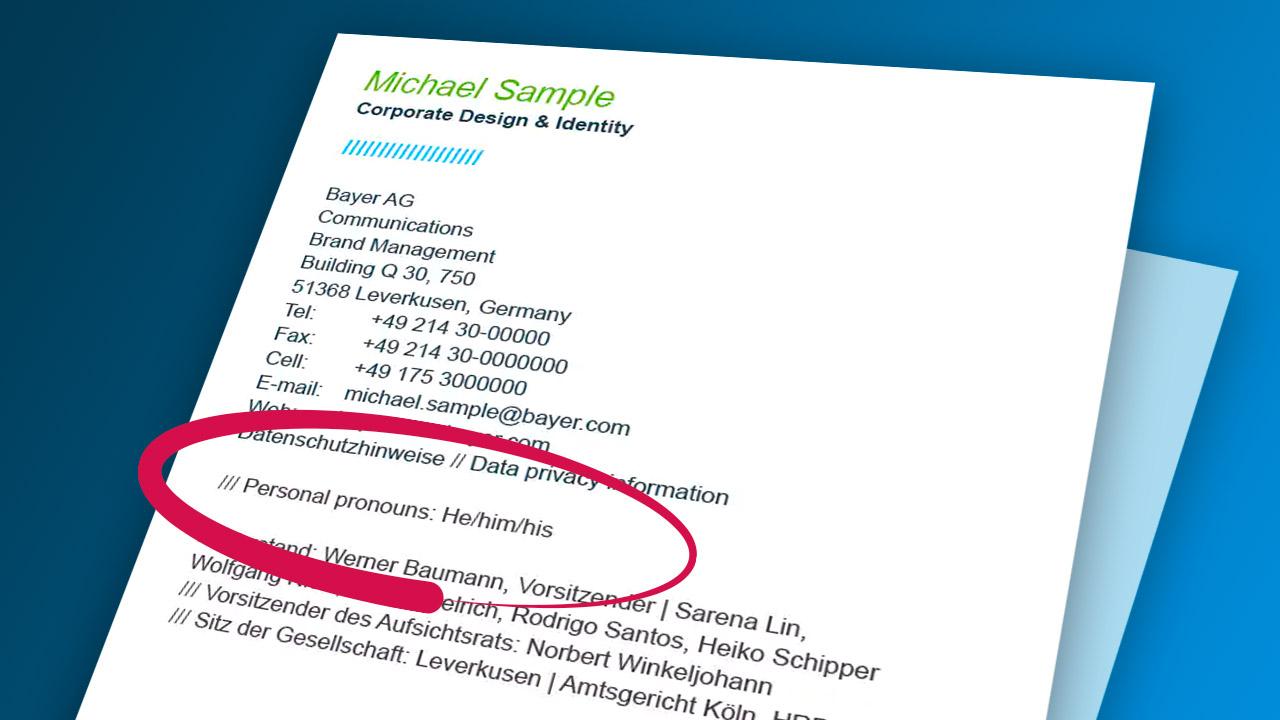How To: Address People

Most of our Inclusive Language recommendations focus on the people and groups who may be affected by our language: being inclusive, listening to and amplifying their perspectives, and using language to contribute to a fair, open and equitable working environment.
In this section, however, we start from the perspective of Bayer colleagues: our everyday activities, projects, and situations we encounter where we may need to consider language.
On this page, we share three tips for addressing people, in various settings (public content, personal written communication, and everyday conversations).
Respect all identities and pronouns
Everyone has the right to self-identify. Your own identity is entirely and immutably yours (of course it may evolve over time, but that’s your prerogative and no one else’s). And in your language, you should afford the same right to everyone else.

This means, when addressing a person, you should use the same pronouns they do to identify themselves (he/him, she/her, they/them, etc.) It also means taking care to spell and pronounce a person’s name correctly, and avoiding stylistic or grammatical choices that imply judgement or skepticism of someone’s identity (e.g. using quotation marks to call attention to identity, as in, “If you are a ‘nonbinary’ person, you…”)
Having to fight to have your identity recognized and accepted is an additional barrier to being able to participate fully and equally in Bayer projects and communities. Supporting others’ identities enables them to deliver their best and more creative work – and, more than that, it’s simply what they deserve.
If you have any further questions about this or any other section of Bayer Identity Net, please contact:
Ask people their preference
No subject in this guide is ‘taboo’, provided that it is approached with awareness, respect and politeness. Accordingly, if you are addressing a person from an unfamiliar background or group, or you are in any way unsure, it is perfectly fine to ask them how they wish to be referred to. Much better to do so than to risk getting it wrong and making them feel excluded.
It is true that, at first, explicitly asking about pronouns and identities can feel awkward – but the more we do it, the more it will be normalized. Consider sharing how you wish to be addressed first, to get the dialogue started. And it’s a good idea to ask (but not force) all team members to put their pronouns in their signatures and bios – so no one has to feel like they are being insistent or ‘marking themselves out’ by stating their identity.
The design of our mail footer allows colleagues to easily add their personal pronouns.
Building equitable relationships
At Bayer, our goal is to meet the needs of our customers, partners and other contacts in a positive and supportive way – and this applies to how we talk and write to them, as well as the products and services we supply them.
This means we endeavor to listen as much as we speak. We do not lecture or patronize. We center others’ stories rather than our own; and we recognize that not all people have the same backgrounds and lived experiences we do – which means it’s essential to amplify the voices and perspectives that have historically been overlooked.
The more you use equitable language, the more you build trust, encourage the open sharing of insights and experiences, and help create an ‘eye level’ relationship where everyone benefits.
We can achieve this by:
- Writing with plain and accessible language; avoiding jargon, slang or technical terms unless they are appropriate for the audience and context
- Using personal address with the first and second person (I/you)…
- …but avoiding over-focus on “I/we/us” as well as the imperative mood (i.e. directly telling people what to do)
- Focusing on human goals and realities, rather than purely technology or science
- Structuring information modestly: starting with the needs of our customers and partners (then working back to how we can contribute), rather than starting with our capabilities
Check out more eye-level advice in the Brand Tonality page within the Verbal Identity section:

Optional addition of personal pronouns as part of the mail footer.





